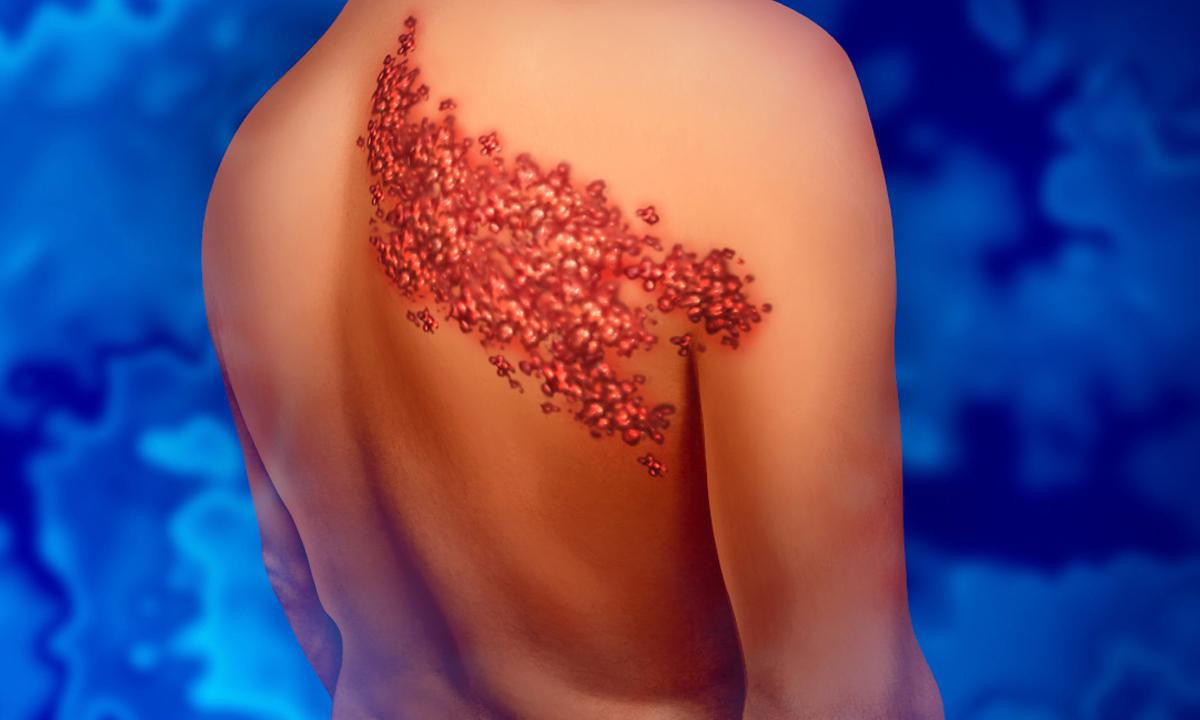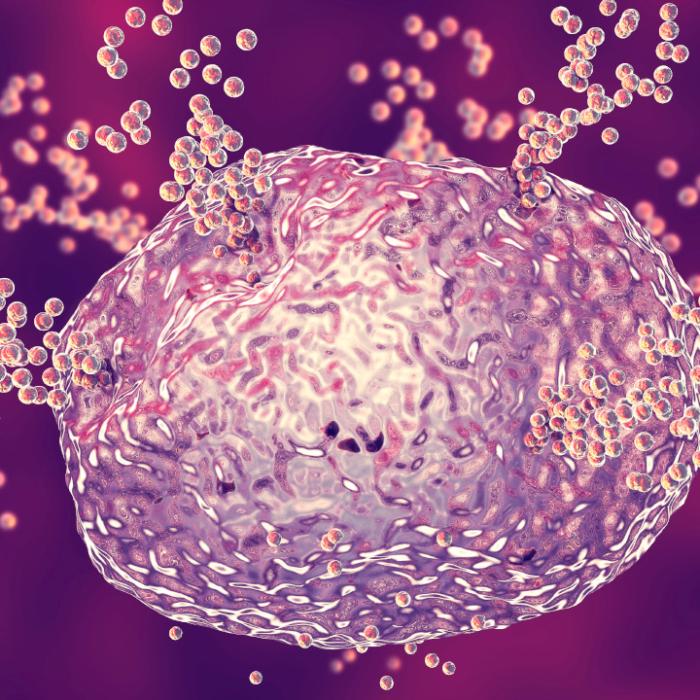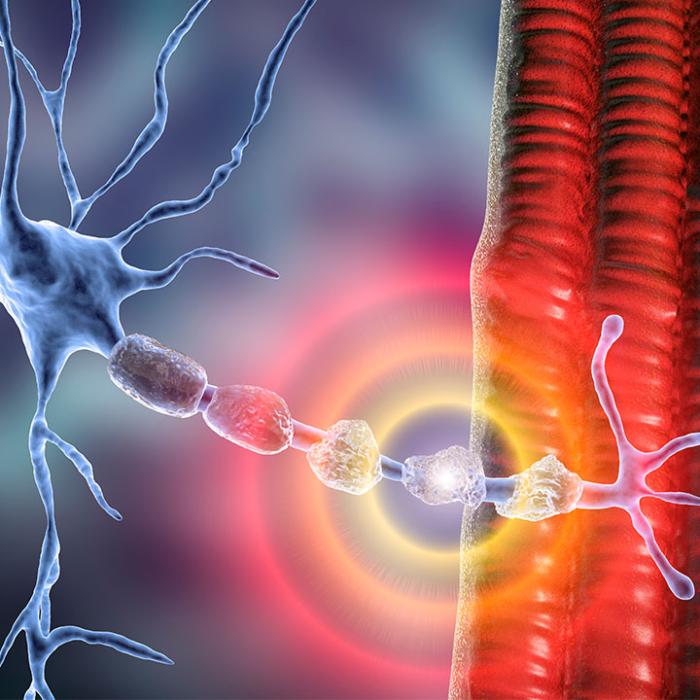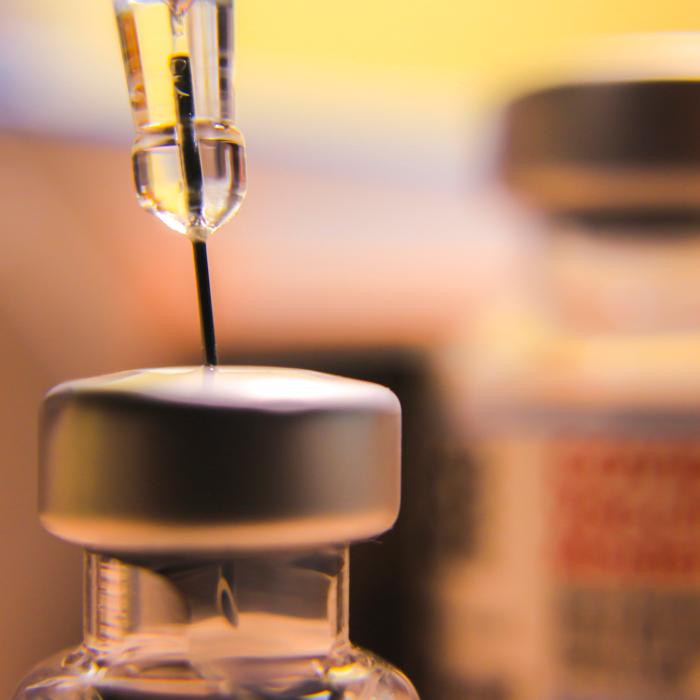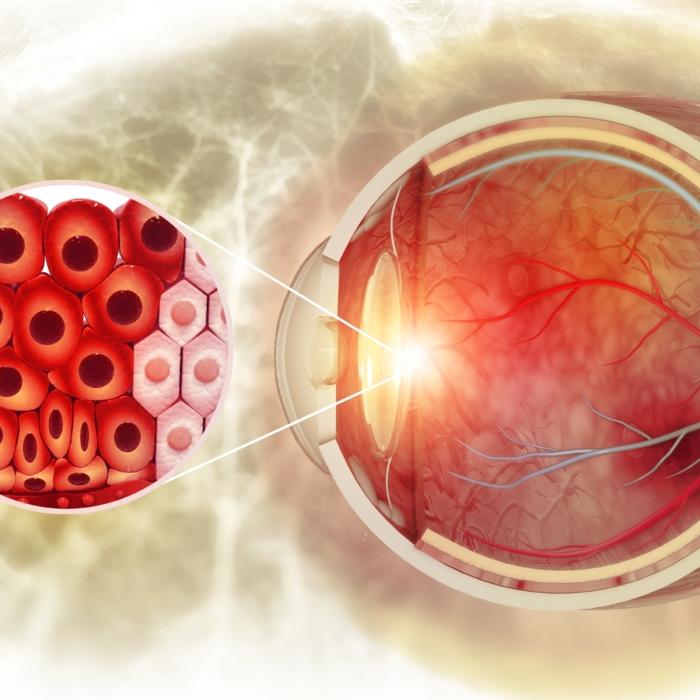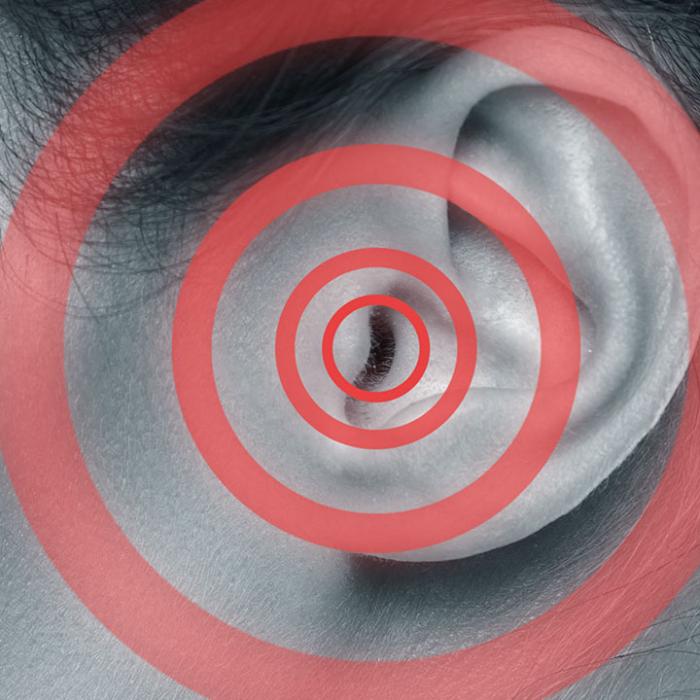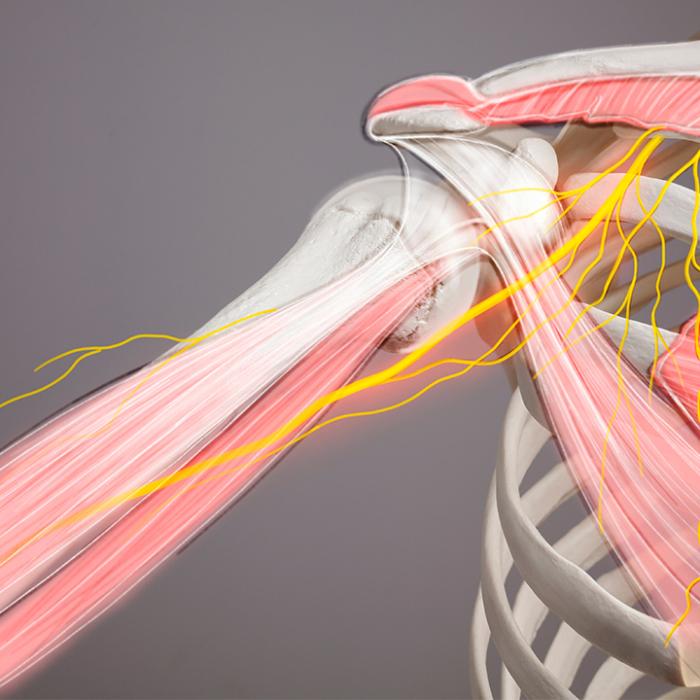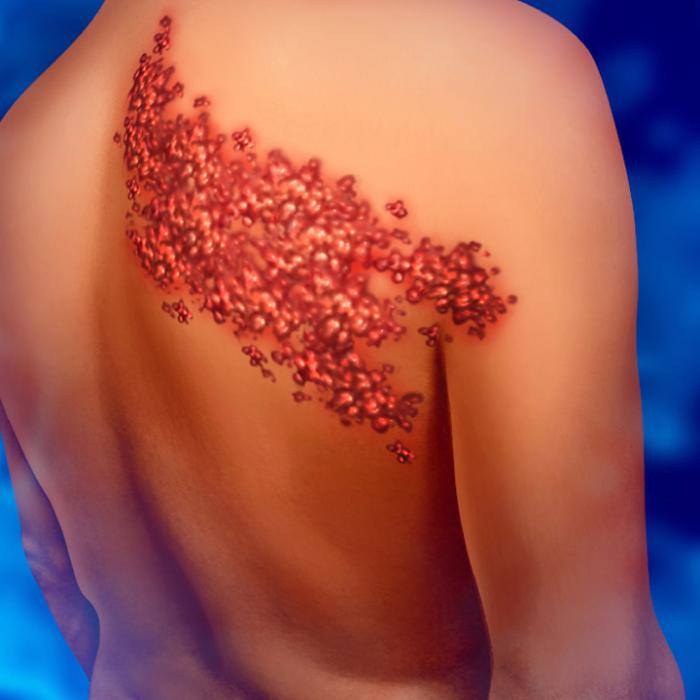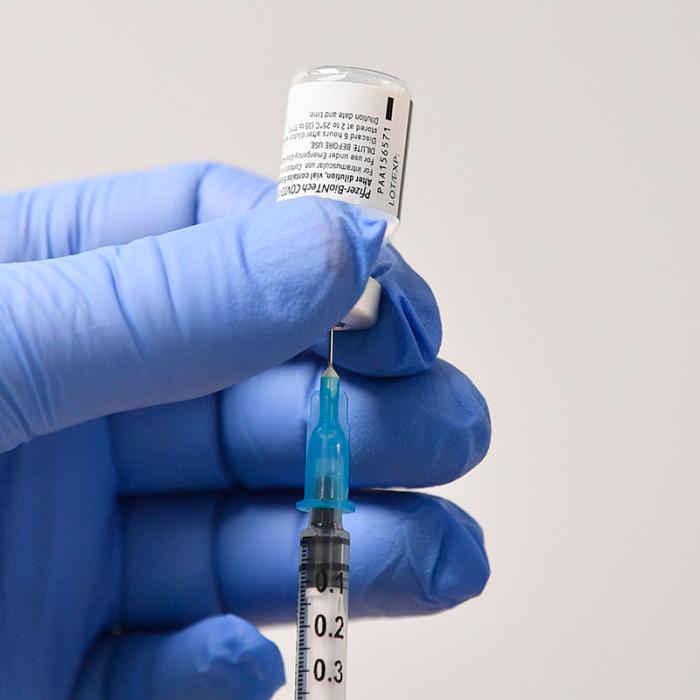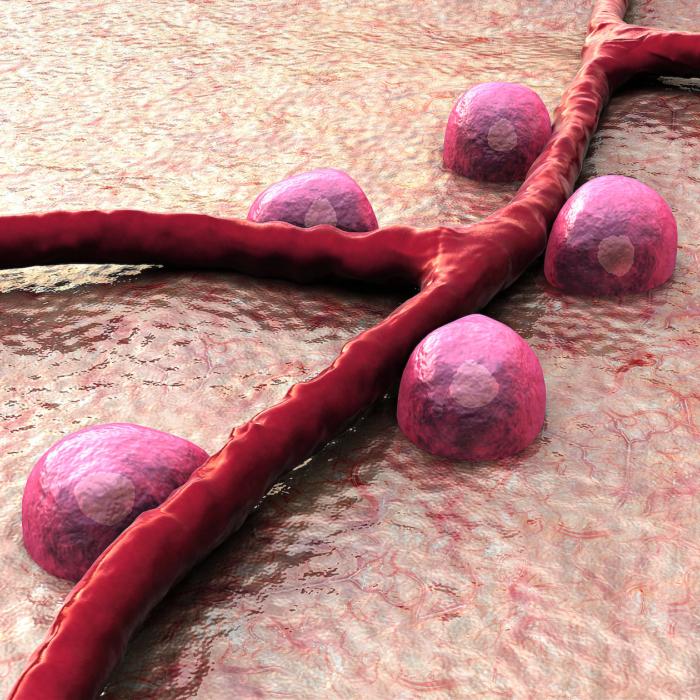Jeff Jackson, a man in his late 40s, is a father, son, and former construction worker who used to be self-sufficient.
Yet less than two years after developing a skin-related vaccine injury, Jackson has been cut off from friends and family and lives on social welfare and donations from strangers.
After getting a second dose of the COVID-19 mRNA vaccine at his local Walmart store, he was walking back to his apartment complex when his mother, walking behind him, noticed dark red shapes moving on the back of his head.
This occurred around 15 minutes after vaccination, Jackson said.
The red shapes moved like paraffin wax in a lava lamp, he said, although the movement was much slower.
When he removed the bandage from the injection site, Jackson described a large volume of clear fluid shooting out like a fountain. He had heard of Moderna arm, where the injected area becomes red, swollen, itchy, and may form rashes. But this was unlike anything he had seen.
Over the ensuing days to weeks, Jackson went in and out of the emergency department as plaques formed everywhere on his body.
“There wasn’t a part of my body where skin wasn’t falling off, had plaque, or was turning red,” he said. ”From the top of my head to the bottom of my feet, I looked like a burn victim.”
Areas with skin folds, such as the back of his ankles, would also bleed spontaneously.
Jackson had developed lichenoid dermatitis, a skin condition typically associated with drug allergies.
The disease occurs because of inflammation between the outer and inner layers of the skin, which are the epidermis and the dermis, respectively. The dermis attacks the epidermis’s underside, causing the skin’s outer layer to plaque and flake off, revealing the raw inner skin.
Worst of all was the pain, which caused Jackson to pass out in the shower twice.
Postvaccine Skin Reactions
Jackson is likely one of the worst-case scenarios for skin reactions to the vaccine. But unfortunately, no one has any answers for why he developed these symptoms.However, most skin reactions reported in the literature have been relatively mild and self-resolving.
“We can conceptualize vaccine reactions as both allergic and autoimmune,” Dr. Jonathan Kantor, professor of dermatology from the University of Pennsylvania, wrote to The Epoch Times.
Common Skin Reactions
COVID arm, which occurs as a rash appearing several days after injection, is a common side effect of the COVID-19 vaccine. The rash can become red and swollen, manifesting across most of the forearms. Most resolve after a few days with or without topical steroids and may not recur if the person is injected for a second time.While research has documented these rashes as a potential vaccine allergic reaction, Dr. Kimberly Blumenthal, a clinical professor and allergist from Harvard University specializing in drug allergies, said they might actually be unexplained immune reactions.
Allergic Reactions
COVID-19 vaccines can trigger allergic reactions.Urticaria, a type of itchy red rash, can appear acutely or as a chronic condition following vaccination. While not life-threatening, the itchiness and discomfort can discourage further immunization.
Autoimmune Skin Reactions
Many autoimmune dermatological reactions have been reported postvaccination, including:- Psoriasis, a skin rash that may also cause damage to the internal organs
- Lichenoid disorders (such as Jackson’s lichenoid dermatitis), characterized by skin plaques and swelling
- Lupus, with typical symptoms including a butterfly rash on the face and rashes on the body
- Vitiligo, an incurable condition in which the body attacks the pigment in the body, causing white patches of skin
Microclotting in blood vessels, which is related to autoimmune conditions, can also be triggered by the COVID-19 spike protein produced after vaccination.
“There is also an interesting pattern of finger-pulp wrinkling that has been described as well. When the tips of our fingers do not receive enough blood supply, the skin is negatively affected. Nails will become thinner and more brittle,” said dermatologist Dr. Angela Bowers, founder of Southlake Dermatology.
Viral Reactivation
Reactivation of latent viruses has also been reported after COVID-19 vaccination. The most common are shingles and herpes flare-ups.Dermatology physician assistant Claire Rogers said she has seen an increase in shingles and herpes flares since the vaccine rollouts in 2021. However, she’s unsure if all the patients reporting these symptoms have been vaccinated.
In recent years, Rogers noticed that herpes and shingles activation have become more severe in the rash distribution.
Neuropathy
Tingling, numbness, burning, and pain are the hallmarks of neuropathy. Bowers and Rogers said many patients who experienced neuropathy after vaccination would reach out thinking that they were experiencing a skin condition. However, it’s actually a disease of the nervous system.Conventional Treatments Can Help
Dermatologists are still primarily using conventional therapeutics to treat these skin reactions.Despite the change in clinical presentation, Rogers said psoriasis and eczema flare-ups have been responsive to conventional treatments of steroids and topical biologics that suppress immune activity.
Low-dose naltrexone, corticosteroids, and intravenous antibody infusions can also help to subside neuropathy flare-ups and autoimmune skin reactions.
Antihistamine medications, such as histamine blockers, can reduce sensitivity reactions, such as urticaria and allergic skin reactions.
Bowers believes that vaccine injuries take longer to resolve compared to long-COVID and non-vaccine-related conditions.
Some skin conditions may need interventions outside of the conventional protocol.
Bowers found that all patients report some improvement when she gives them medication that improves their blood flow.
“Pentoxifylline has been a medication I’ve found very useful for patients with microclotting. It has been around for decades in the dermatology armamentarium,” Bowers wrote.
Realities of the Vaccine-Injured
Jackson likely isn’t the only person who has experienced severely debilitating skin conditions after vaccination. Many choose to stay silent about their injuries.He feels isolated from his friends. He relies on public donations to pay for daily necessities and medical treatment. He knows vaccine-injured people in worse financial and physical situations than he is are unwilling to come out publicly out of fear of repercussions.
Jackson has spent most of his days researching to find answers and said he has worked out a formula for his skin. It’s a mixture of colloidal silver, neem oil, tea tree oil with aloe vera, and zeolite.
He combines all four ingredients, covers his body with the salve for 15 to 20 minutes, and then takes a shower. He did this for five days, resulting in “complete baby skin.”
Jackson’s endgame is to recover physically so that he can become self-sufficient. He’s still severely debilitated by the pain and suffers from insomnia.
“My parents are in their 70s. I’m supposed to be taking care of them,” Jackson said emotionally. “I don’t want to have my mom come over here and take care of me. I want to be a father for my kids, whom I haven’t seen in years.”


